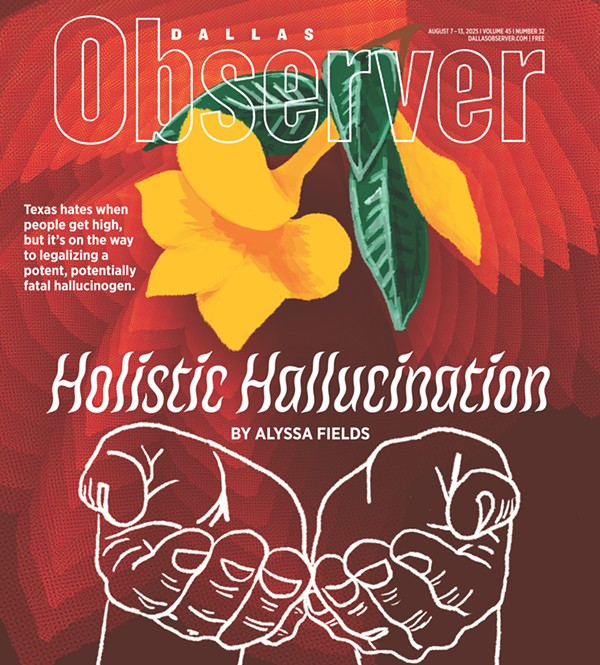Jeff Siegel, also known as the Wine Curmudgeon, has made uncovering affordable good wine his life's work. He's written for publications nationwide and has a guiding philosophy: the wine industry tries to intimidate consumers instead of educating them — and nuts to that. He knows a lot about the booze industry, and here he shares some insight into the Trump administration's impending guidance.
Sometime in the next couple of weeks, the federal government will urge Americans to drink alcohol in moderation, which, in the way the Trumpian world works these days, will almost certainly erupt in protests across the country.
The recommendation is expected to be part of the revised U.S. Dietary Guidelines for Americans, updated every five years by the U.S. Departments of Health and Human Services and Agriculture. In doing so, the new guidelines will sidestep a controversy that started more than two years ago when the World Health Organization called any amount of drinking dangerous, and studies published in the U.S. and elsewhere concurred.
Over the last year or so, the new guidelines were expected to follow the WHO mandate, which had been endorsed by the U.S. Centers for Disease Control and Prevention and various consumer groups, including the Center for Science in the Public Interest. Currently, the guidelines suggest a maximum of two drinks daily for men and one for women.
But even that was too much for WHO. Its 2023 statement — “when it comes to alcohol consumption, there is no safe amount that does not affect health” – specifically cited cancer, comparing alcohol to long-established carcinogens like asbestos, radiation and tobacco. It capped a flurry of studies demonizing drinking dating to the late 2010s, including the infamous wine and cigarette study, which claimed that drinking a bottle of wine a week was as deadly as smoking as many as 10 cigarettes.
These studies also discounted any health benefit from moderate drinking, especially for the heart, which had been accepted medical wisdom for decades. In 2023, the American Medical Association published a study that said, “Low-volume alcohol drinking was not associated with protection against death from all causes.”
However, the Reuters news agency reported twice in the past 10 days that its sources, which it described as people with knowledge of the decision-making process, said the new guidelines will urge moderation, but not define it. Instead, the new guidelines will focus on the research surrounding alcohol consumption and share this information with consumers.
“There’s no need for a tremendous rush for new dietary guidelines, since the current ones are quite stringent as they are,” says attorney Michael Walsh with Clark Hill in Dallas, whose practice includes food and beverage regulatory issues. “So it’s not a bad idea to hold the brakes and take a fresh look.”
The reason for the federal government’s change of heart is unclear, though it did infuriate several groups that wanted alcohol removed entirely, as well as more stringent cancer labeling for cans and bottles. The Consumer Federation of America, claiming “an estimated 20,000 cancer deaths attributable to alcohol each year,” said the beer, wine and spirits businesses have “fought to keep consumers in the dark about its products and their health harms.”
One analyst, Tom Wark, wrote last week that the Trump administration’s “desire to discredit nearly everything the Biden administration had done” may be behind the alcohol decision, given that the eventual Biden guidelines might have been stricter. For another, given the mood swings common to Trump Administration policy decisions, almost everyone who follows this subject has said it wouldn’t be surprising to see the guidelines change after all.
So, until then, drink in moderation – whatever that might be.

Audio By Carbonatix
[
{
"name": "GPT - Billboard - Slot Inline - Content - Labeled - No Desktop",
"component": "21721571",
"insertPoint": "2",
"requiredCountToDisplay": "2"
},{
"name": "STN Player - Float - Mobile Only ",
"component": "21861991",
"insertPoint": "2",
"requiredCountToDisplay": "2"
},{
"name": "Editor Picks",
"component": "17105533",
"insertPoint": "4",
"requiredCountToDisplay": "1"
},{
"name": "Inline Links",
"component": "18349797",
"insertPoint": "8th",
"startingPoint": 8,
"requiredCountToDisplay": "7",
"maxInsertions": 25
},{
"name": "GPT - 2x Rectangles Desktop, Tower on Mobile - Labeled",
"component": "22608066",
"insertPoint": "8th",
"startingPoint": 8,
"requiredCountToDisplay": "7",
"maxInsertions": 25
},{
"name": "Inline Links",
"component": "18349797",
"insertPoint": "8th",
"startingPoint": 12,
"requiredCountToDisplay": "11",
"maxInsertions": 25
},{
"name": "GPT - Leaderboard to Tower - Slot Auto-select - Labeled",
"component": "17357520",
"insertPoint": "8th",
"startingPoint": 12,
"requiredCountToDisplay": "11",
"maxInsertions": 25
}
]











